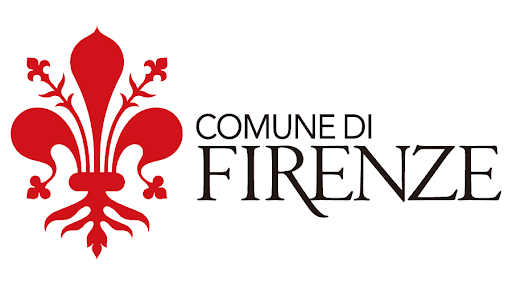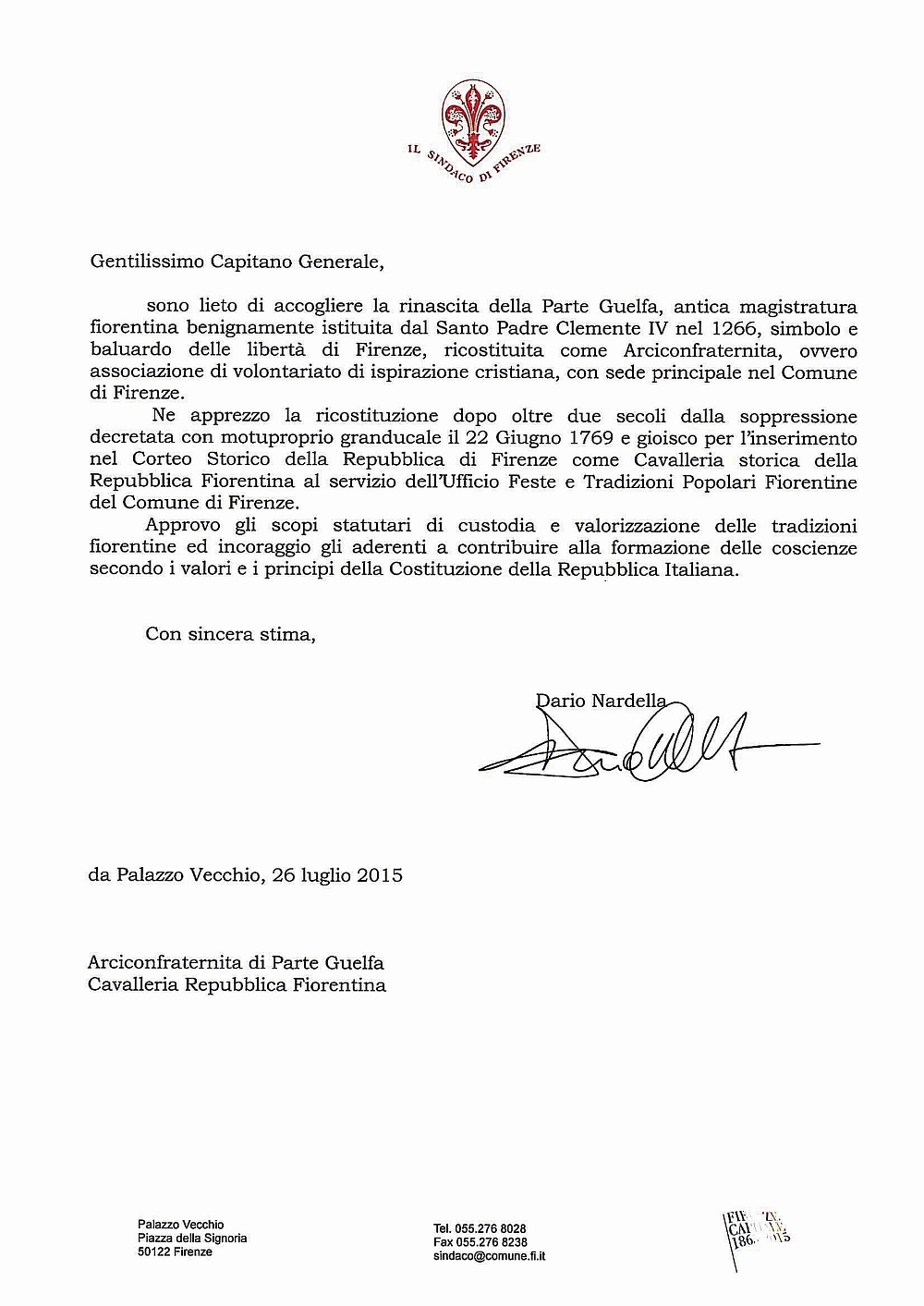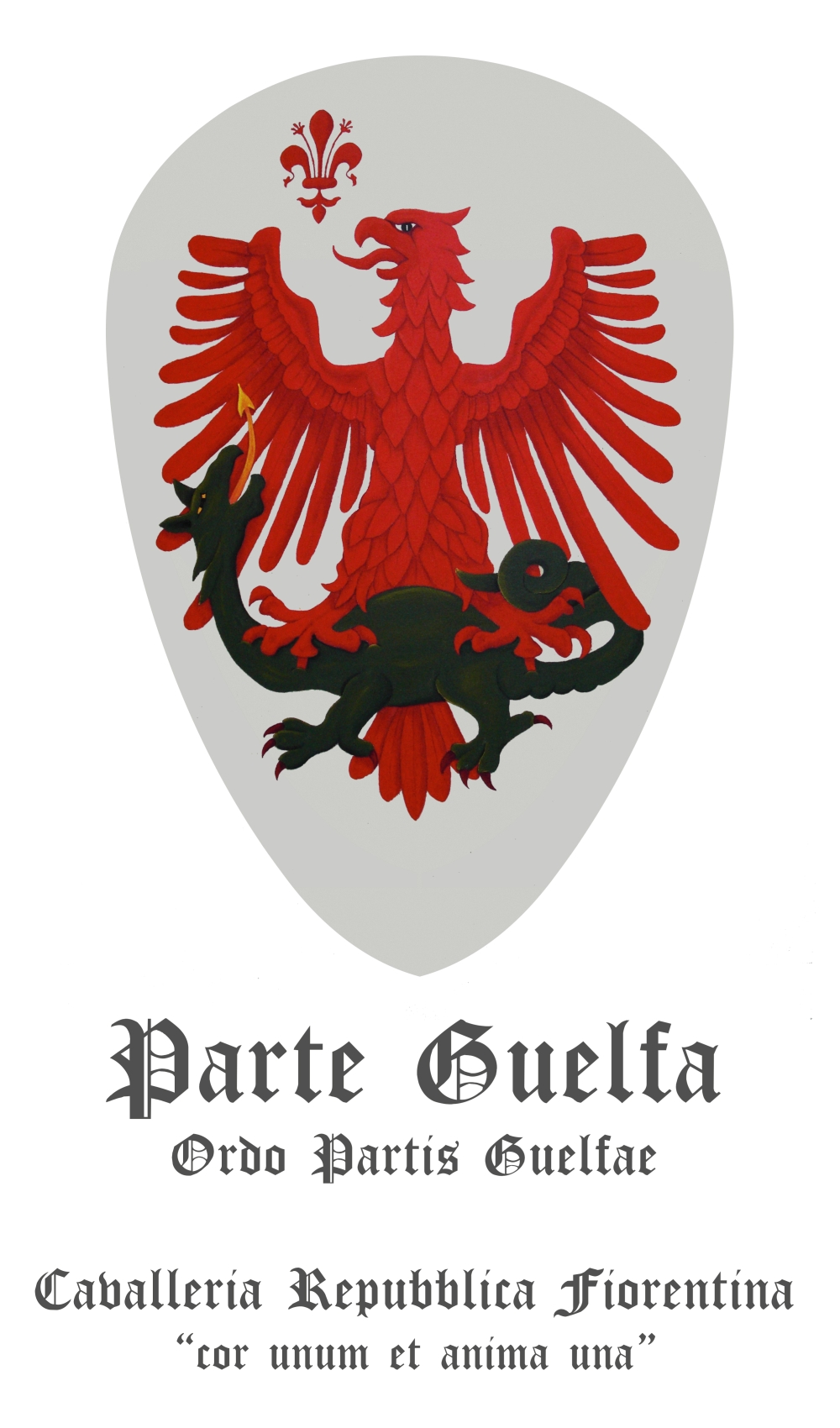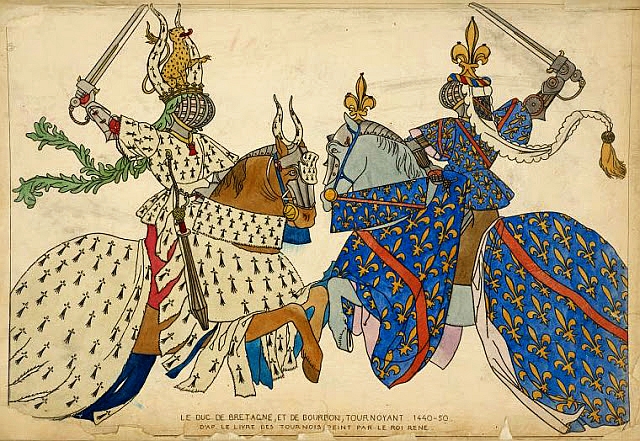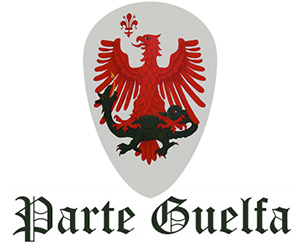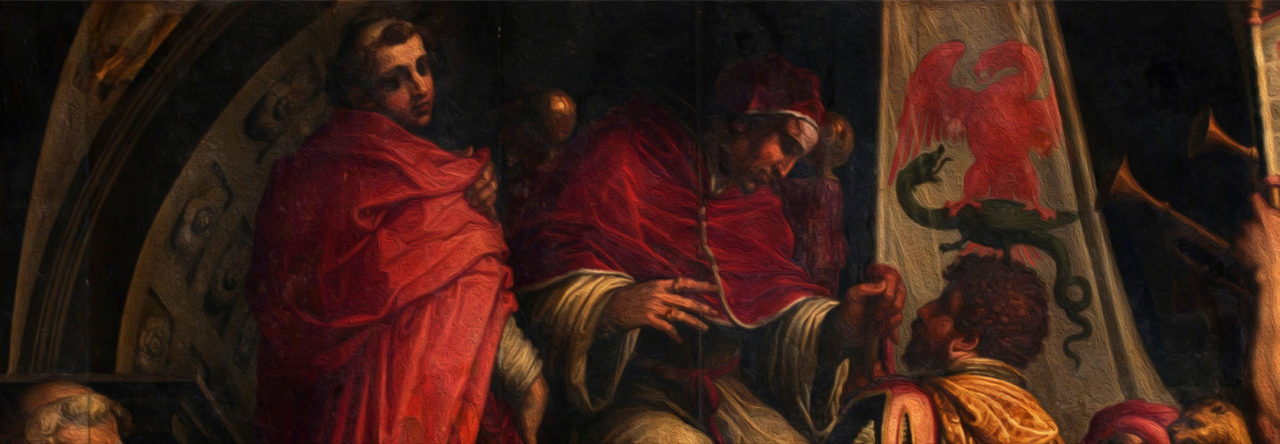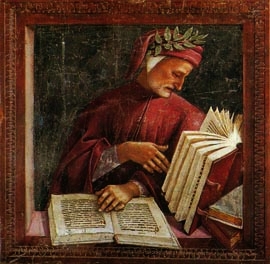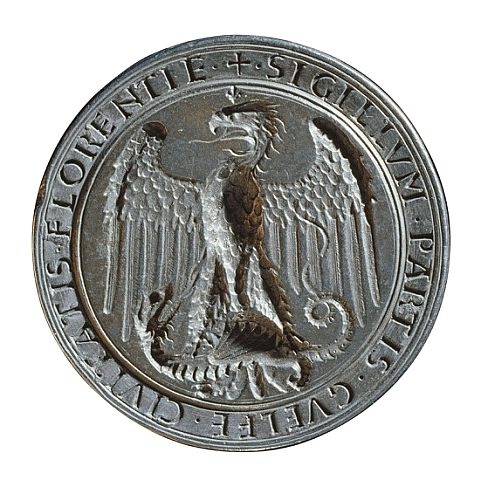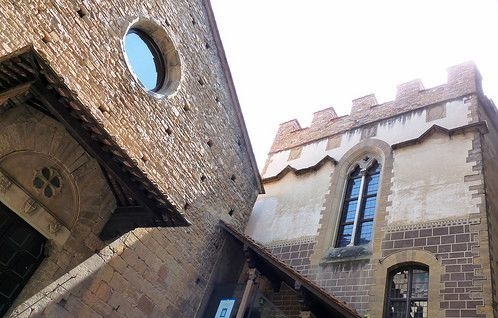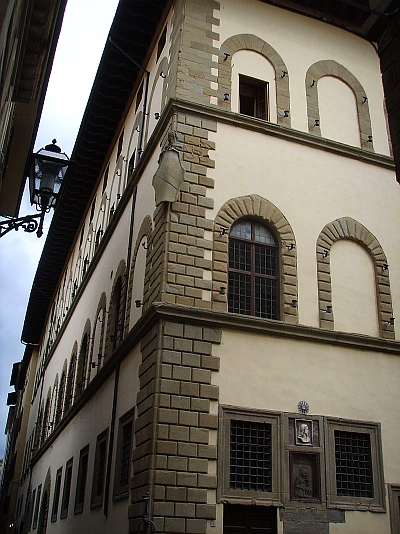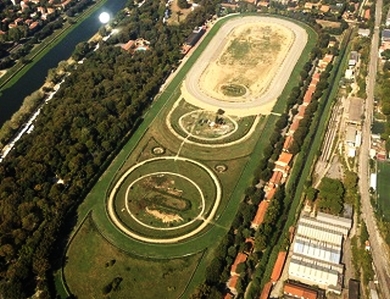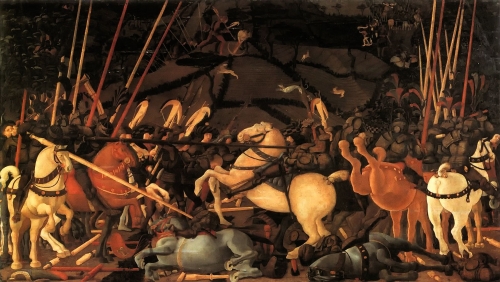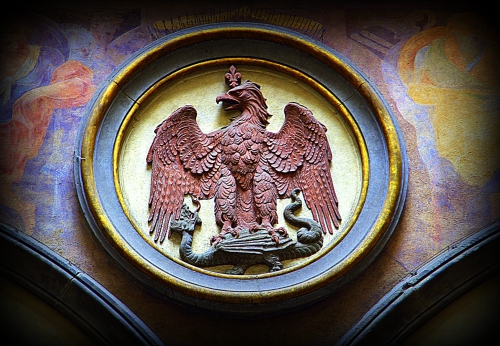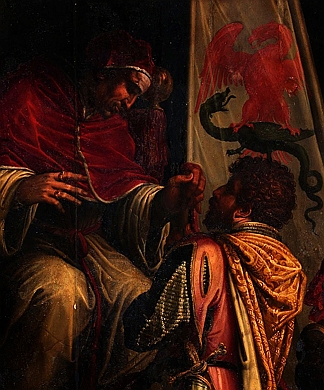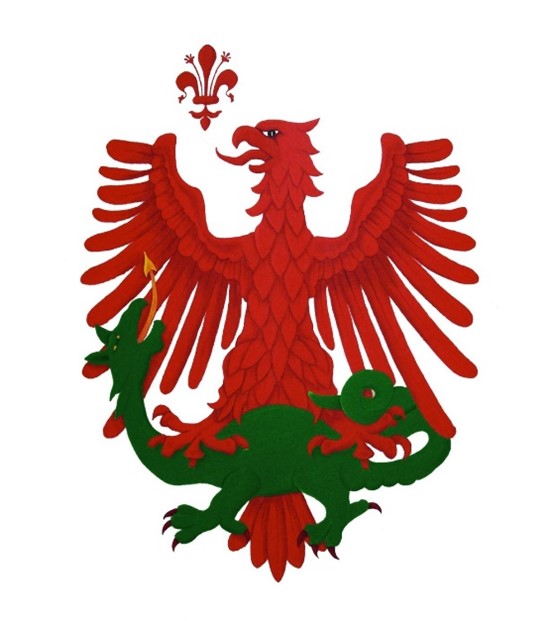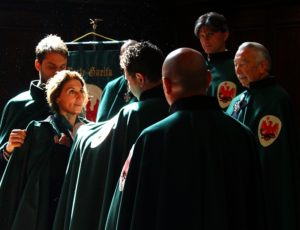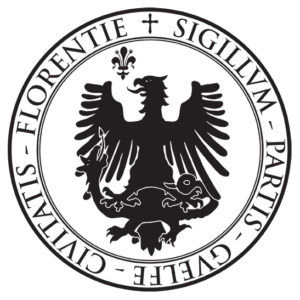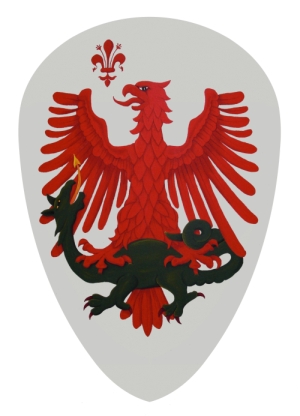
GUELPH PARTY
Ordo Partis Guelfae
STATUTE
ACT OF APPROVAL
The Holy Father Clement IV, on February 26 of the year of the Lord 1266, kindly deigned to approve the establishment of the Florentine Guelph magistracy and to grant his insignia to the consuls of the knights of the Guelph Party of Florence.
MOTTO
“Cor unum et anima una”
Acts 4.32
COLORS
The White of Faith, the Green of Hope and the Red of Charity.
SIGNS
“In silver, with a red eagle groping a green dragon and surmounted by the Florentine lily”
GREETING
The battle cry of the ancient Guelph cavalry “Marzocco! Marzocco! Marzocco! ” it is the greeting that is addressed to the civil and religious authorities and to the symbolic places of the Guelph Party, as well as an expression of unity among the members of the Archconfraternity.
PREMISE
The Guelph Party, a political and military institution built in the 13th century, has become a magnificent Archconfraternity founded on the sentiments of charity and on the fraternal relations between its members. Fraternity is equality in the difference where each is himself. Participating in the activities of the Guelph Party means acquiring humility, charity and awareness of the role and tasks entrusted to carry them out in the best possible way for the good of each and every one. The ancient and inseparable bond of fidelity to the Supreme Pontiff is manifested in the Guelph Party through the custody of ecclesiastical bodies and responsibility towards all components of the Church.
CHARISM
The Guelph Party, originating from a martial judiciary, is constituted as a hierarchically structured Order and defines its actions through discipline, generosity and courage, for the protection of creation and for the custody of the Church and traditions. Any person who does not have the firm will to perfect himself in life, following these intentions, can never become a brother or sister of the Guelph Party. The zeal to renounce in the society of abundance, the effort for the protection of nature, the generous commitment for the weakest, the courageous struggle for justice and peace are the characteristics of the Guelph Party.
LEGAL STATUS
The Guelph Party, after the interruption following the suppression with a grand ducal motuproprio of 22 June 1769 and by virtue of the ancient possession of legal status in Florence, with the blessing of His Eminence Most Reverend Cardinal Archbishop Gualtiero Bassetti, President of the Italian Episcopal Conference, and with the statutory approval of His Excellency Dario Nardella, Mayor of Florence, it is reconstituted with a Public Deed of 25 March 2015, Florentine New Year, and is legally re-established as an Archconfraternity, or a voluntary association.
MISSION
The Guelph Party is committed to the protection and enhancement of natural and landscape resources, works for the enhancement of popular traditions, with special attention to Christian ones, and works for the custody of ecclesiastical institutions. The members are called Brothers and Sisters and are obliged to bear constant witness to the Christian virtues of charity and fraternity, in their behaviors and works, as a contribution to the formation of consciences according to the teaching of the Gospel, and they promote dialogue and dialogue with an authentic ecumenical spirit. collaboration with other Christian Churches under the guidance and assistance of the Roman Catholic Apostolic Church. The Guelph Party does not pursue profit or political purposes.
ACTIVITIES
The Guelph Party carries out activities of environmental, traditional, recreational-sporting, religious, cultural and educational value. Honoring the task conferred on it in the 16th century by Cosimo I de ‘Medici, Grand Duke of Tuscany, the Guelph Party works for the protection of natural and landscape resources through a vast environmental protection service, created through its own department specifically formed and called Dragoni of Tuscany. The Archconfraternity is committed, in particular, to the custody and protection of city parks and natural reserves and works to encourage and guarantee the correct application of the provisions on the protection of flora and fauna by creating the permanent surveillance service, with the detection of administrative offenses and violations of regulations in protected natural areas, as well as by reporting cases of environmental degradation and, where possible, the related causes to the competent authorities. Parte Guelfa engages in training activities aimed at environmental education, participating in awareness programs in schools and promoting information on environmental regulations; acts for the enhancement of green areas, competing with the competent institutions in the recovery and promotion of environmental heritage and culture, and takes action jointly with the Civil Protection authorities to deal with environmental emergencies. The Guelph Party carries out equestrian ceremonial services in favor of the Municipality of Florence, constituting the Cavalleria Fiorentina group of the Historical Parade of the Florentine Republic, coordinating it and providing for its needs. The Archconfraternity carries out pastoral and worship activities under the guidance of the Prior General and the Chaplain Major and performs services of honor during ecclesiastical audiences and receptions, doing its utmost for the protection, where required, of religious personalities during events or trips. The Archconfraternity deals with the recovery, development and promotion of playful-sporting traditions historically created by the Guelph Party, such as the Giostra del Giglio and the Giostra di Madonna Libertà; the enhancement and conservation of ecclesiastical cultural heritage and traditions of religious and popular origin; the care of the dignity of worship and the animation of liturgical celebrations in the Rectories of Orsanmichele and San Carlo dei Lombardi in Florence and of Santo Stefano in Serravalle Pistoiese. The Guelph Party carries out activities of solidarity towards the needy with works of material and spiritual mercy in a Christian vision of life, in stable collaboration with the Catholic Church for the realization of the pastoral action plans of the diocesan community.
CULT
The magnificent Part Guelph Archconfraternity, while admitting the faithful of every religious confession among its members, is an institution of Christian origins and inspiration. In memory of the historical events that led to the pontifical recognition of the association of the knights of the Guelph Party and the formal attribution of the seals and insignia of Pope Clement IV, the Archconfraternity annually celebrates the anniversary of February 26, the anniversary of the Battle of Benevento 1266, as well as the feast of Sant’Andrea di Firenze, Florentine bishop of the IX century. On that date, confreres and sisters of the Guelph Party held the Guard of Honor in the Rettoria di San Carlo in Florence and commemorate the papal approval with the Ceremony of the Insignia. The Feast of the Insignia of the Parte Guelfa was established on the first following Saturday, with the renewal of the Oath of Loyalty by the Knights and Dames in Piazza San Giovanni in Florence and the distribution of the “Berlingozzo” to the citizens in the Palagio di Parte Guelfa .
The Archconfraternity also celebrates particular acts of devotion in honor of St. Louis of Anjou, Patron of the Guelph Party since 1318, and carries out the formation of members in the practice and witness of Christian life with pilgrimages and itineraries of faith and through catechetical courses. and moments of community prayer. Devotion to St. Louis of Anjou, Bishop of Toulouse and belonging to the Order of Friars Minor, is also implemented in leading a life attentive to respect for creation and creatures, in fullness with the Franciscan spirit that descends directly from the work of Saint Francis of Assisi, founder of the Friars Minor and patron saint of Italy, who left a text of great environmental sensitivity in the Canticle of the Creatures. So much so that the Holy Father Pope Francis took it up again in the encyclical “Laudato Si”, which can well represent a moral guide in working effectively to protect the environment. The Franciscan spirit, as well as in the attention to the environment, is also found in the ecumenism that distinguishes the Guelph Party. On the occasion of the Solemnity of San Ludovico d’Angiò, which is celebrated every 19 August, the Archconfraternity celebrates the anniversary in Serravalle Pistoiese, the only town in Tuscany where the saint is patron, at the Church of Santo Stefano.
MEMBERS
The Ordo Partis Guelph is made up of Knights and Dames in three degrees of service: Consul of the Guelph Party, Captain of the Guelph Party, Knight or Lady of the Guelph Party. The Knights and Dames are created by the Consul of the Guelph Party through a special investiture ceremony. The admissions of Knights and Dames are decreed by the Council of Belief with a special diploma signed by the Consul and by the Captains and bearing the seal of the Guelph Party. The Supreme Pontiff of the Roman Catholic Apostolic Church, the Prior General, the Chaplain Major and the Consul of the Guelph Party have the right to grant, at their discretion and in particular cases, Motu Proprio, honorary admissions to the Archconfraternity, informing the Council of Belief. The expelled or resigned confrere loses all acquired spiritual and material rights. Only those who have made themselves highly meritorious of the Guelph Party can be admitted as honorary confreres. All personal titles, however named, indicated in this Statute are exclusively internal service titles that refer to the ancient denomination of the respective functions and do not in any way constitute the recognition of a public honor or a noble title.
REQUIREMENTS FOR ADMISSION
The requirements for admission to the Guelph Party are to have reached the age of eighteen, to be morally clean and to have a correct and polite behavior, not to be part of associations or movements in contrast with Christian morality and to have paid the admission fee. Once the members have chosen the district they belong to, they will never be able to change it again. Only the Council of Belief can determine, on an exceptional basis, changes in the membership of the members. Only those who have received the investiture will be eligible for positions of responsibility in the Archconfraternity. Every single member is required, due to the role he holds and as a representative of the Guelph Party, serious and adequate behavior and attitudes. If this does not occur, the same will be subject to sanctions by the Council of Belief, as required by this statute, through the Disciplinary Commission according to the provisions of the Code of Ethics of the Guelph Party. The members of the Guelph Party who have held positions of responsibility in the Archconfraternity have the right to claim the title of Emeriti at the end of their mandate. The Guelph Party participates in the suffrage, funeral and burial of its members, with the consent of the family members. Where requested, the members of the Guelph Party can also perform ceremonial services in the ecclesiastical context, on the occasion of the celebration of the Sacraments of the Brothers and Sisters, such as marriage, baptism of children, farewell of close family members. They can also request the use of the Rectories of San Carlo and Orsanmichele for these celebrations. For weddings, participation can also be requested in civil proceedings. Voluntary activities are provided on a personal, spontaneous and free basis.
The Confreres and Sisters who are members of the Archconfraternity belong to the following roles:
Aspirants
Ecclesiastics
Honorary Knights and Dames
Ordinary Knights and Dames, divided into the ranks of Knights of Arms and Knights of Corredo.
ADMISSION
Those wishing to join the Guelph Party Archconfraternity must be presented by one or two godfathers or godmothers and submit a specific written request addressed to the Council of Belief which, having assessed the requisites of the applicant, unanimously resolves admission to the period of aspirantate. The Aspirant, having accepted his application and paid the annual membership fee, participates in the cultural, ethical and religious training course arranged by the Council of Belief, without which he will not be admitted to investitures. The period of aspirantate has a duration of not less than six months and not more than four years, at the end of which, at their sole discretion, the Captains of the Guelph Party unanimously resolve the definitive acceptance of the application and the admission of the Aspirant to the solemn investitures. Those admitted as honoraries and ecclesiastics do not carry out an aspirantate and are not required to pay the annual membership fee. The Aspirant, at the time of investiture, is created a Knight or Lady and becomes an Ordinary member.
RANKS
The Knights and Ordinary Dames are divided into two ranks: Knights of Arms, those who actively volunteer in the Archconfraternity; Cavalieri di Corredo, those who, although in compliance with the annual membership fee, cannot actively lend themselves for valid reasons. such as health, lack of time or excessive distance. Only Knights and Dames of Arms are eligible for the rank of Captain of the Guelph Party and can hold positions of responsibility such as those of Secretary of Belief, Superintendent General, Chancellor and others whose role is deemed relevant by the Council of Belief.
PRIVILEGES
The Ordinary can suspend the insignia of the Order of the Guelph Party to his family arms. If he does not possess a coat of arms, the assignment of the knighthood of the Guelph Party gives the ordinary honors the right to create a heraldic coat of arms. The Consul, Captains and Chaplains can quarter their coat of arms with that of the Order, and retain the title of Emeriti at the end of their mandate. The Council of Belief may possibly grant exceptional uses of the signs, which are always the subject of personal non-transferable concession.
GUELPH PARTY INVESTITURES
It is up to the Consul of the Guelph Party to create Knights and Dames, or to carry out the investitures and, in his absence, by implicit delegation, to the Captain of the Guelph Party who holds the office of Captain General. The solemn investitures of the Guelph Part take place in the historic rooms of the Palagio dei Capitani di Parte Guelfa according to the ancient Florentine rite of knightly investiture, which provides for the ceremonies of the oath, the signature and the decoration, and are preceded by the preparatory Vigil of the Arms. held in Orsanmichele. The oath, in the traditional formula, is taken collectively in the Sala del Camino and, subsequently, signed individually in the Sala dei Capitani before the Credenza Council. The decoration takes place in the Brunelleschi Hall, by individual call, by the Consul and the Captains and with the participation of the Knights and Dames. It is the duty of the Knights and Dames to participate in meetings, ceremonies, religious functions, as well as in the spiritual, charitable and voluntary activities promoted by the Guelph Party.
COUNCIL OF BELIEF
The Council of Belief is the highest organ of the Guelph Party and is composed of the Consul, who has steering functions, and the Captains, with deliberative and executive functions, who exercise the powers conferred by this statute. For the accomplishment of their duties, the Captains of the Guelph Party can establish offices useful for every need and avail themselves of the collaboration of a variable number of experts selected as needed. The Council of Belief meets no less than once every two months, but may, at any time, be convened if any of its members deem it necessary. Board offices can be re-elected without limits and the Credenza Board remains in office for five years.
CONSUL
The Consul of the Guelph Party directs its activities, has the right to participate and speak in all meetings and can guide and moderate the Captains of the Guelph Party. He is elected by the Captains among the highest personalities of the Guelph Party and can be re-elected. The Honorary Title of Excellence is attributed to the Consul of the Guelph Party.
CAPTAINS OF GUELPH PARTY
The Captains of the Guelph Party are elected by the General Assembly of members with a secret vote in the number of five and make up, with the Consul, the Council of Belief. They have the power to appoint the Secretary of Belief, the Camerlengo, the Curator, the Herald, the Vessillifero, the Priors of Pecunia, the Part Judge, the Guelph Party Armed Forces, the Board of Judges, the Notary, the Judges and Field aides, as well as the other offices provided for by the statute. The Captains direct and regulate the performance of all activities of the Archconfraternity, indicate the meetings, establish regulations and penalties for each member. The Group Leader of the Florentine Cavalry, or the representative of the Archconfraternity at the Historical Parade of the Florentine Republic, is elected from among the Captains and his mandate is linked by contemporaneity to that of the Captains themselves. With the end of the legislature of the Guelph Captains of the Party, the Cavalry Group Leader also lapses. Each Capitano di Parte Guelfa receives the honorary treatment of Don.
CAPTAIN GENERAL
The Captains of the Guelph Party annually elect the Captain General from among themselves, who performs the functions of the legal representative or the President of the Archconfraternity, and manages the agenda in the Council of Beliefs and in the General Assembly.
CAPTAIN MAJOR
The Captains of the Guelph Party annually elect the Captain Major from among themselves, who performs the functions of Vice-President of the Archconfraternity, replacing the Captain General in his absence, with the same full powers regarding the legal representation of the Archconfraternity.
CAPTAIN LIEUTENANT
The Captains of the Guelph Party annually elect the Captain Lieutenant from among themselves, who performs the functions of coordination of the Lieutenancies and Colleges of the Guelph Party in Italy and in the world.
CAPTAIN CHAMBERLAIN
He is appointed, among them, by the Captains of the Guelph Party to oversee all economic matters and, having received the approval of the Council of Belief, appoints the Governor, the Provveditore General and the Bursar to assist or replace him where and when necessary.
CAPTAIN ENGINEER
He is appointed, among them, by the Captains of the Guelph Party to supervise every operational issue, after receiving the approval of the Credenza Council, he appoints the Architect and the Lieutenants for Logistics, Maintenance and Custody as well as all the others in charge of ordinary activity. and extraordinary part of the Guelph Party to assist or replace him where and when necessary.
SECRETARY OF BELIEF
He is appointed by the Guelph Party Captains with organizational duties and carries out the function of drawing up all the minutes of the meetings of the Credenza Council and of the General Meetings. It acts as a link between the Credenza Council and the general staff of the persons in charge of the various services and can be assisted by Attendants for organizational purposes.
GOVERNOR
He is appointed by the Camerlengo to provide for the economic and administrative management of the Archconfraternity.
GENERAL PROVIDER
He is appointed by the Camerlengo to provide for the financial collection necessary to cover the needs of the Archconfraternity.
ECONOMIST
He is appointed by the Camerlengo and takes care of the accounting records in order to provide the Camerlengo and the Credenza Council with the information necessary to exercise the control and decision-making functions in economic and financial matters, as well as for the preparation of the report.
CHANCELLOR
He is appointed by the Captains of the Guelph Party to manage some relations with public institutions.
PROVVEDITORE FOR THE ARTS
He is appointed by the Captains of the Guelph Party to establish and manage relations with the productive and professional categories or with the set of people who carry out an economic or public or private activity.
SEAL KEEPER
It is appointed by the Guelph Part Captains to guard the seals of the Guelph Party.
HERALD
He is appointed by the Captains of the Guelph Party and acts as the first attendant of the Consul and of the Credenza Council which usually assigns him special assignments.
AQUILIFERO
He is nominated by the Guelph Captains with the task of parading the golden eagle, a living emblem of the Guelph Party, in processions and processions.
BANNER
He is appointed by the Captains of the Guelph Party to manage the insignia of the Guelph Party on every public occasion and appoints two Standard Bearers to assist or replace him.
CONSTABLE
He is appointed by the Captains with the role of moderator of the Senate of Captains. The Constable of Parte Guelfa enjoys the privilege of parading, on horseback and wearing armor or chest of arms, at the head of the group in public events in which the Parte Guelfa participates with equidae, including those of the Historical Parade of the Republic Fiorentina.
PECUNIARY PRIORS
They are appointed by the Captains of the Guelph Party and have the function of verifying the work of the Camerlengo at least once a year.
PRIOR GENERAL
He is a Bishop of the Roman Catholic Apostolic Church appointed by the Belief Council of the Guelph Party, as the spiritual guide of the Archconfraternity, and indicates its addresses of a liturgical and religious nature.
MAJOR CHAPEL
He is a priest indicated by the Catholic Church at the request of the Guelph Party Captains and is entrusted with the service and religious assistance at the Rectories of San Carlo dei Lombardi and Orsanmichele, ecclesiastical seats of the Guelph Party in Florence.
ALMONER
He is appointed by the Captains to provide for the charitable works of the Guelph Party, with the contribution of the funds raised by the Oblators. He responds to the Board of Credence, through the Captain Camerlengo, and is authorized by this for the individual operations.
ARMED KNIGHTS
The Guelph Party Armed are the body that carries out all security activities during the events in which the Guelph Party is called to participate. They are appointed and commanded by the Captains of the Guelph Party and must follow their provisions. The Armed are an expression of the authority of the Belief Council.
DIGNITARIES
The Dignitaries of the Guelph Party constitute the group of officials in charge of the Guelph Party. They are appointed and commanded by the Captains of the Guelph Party and must follow their provisions.
DECANS
The Deans of the Guelph Part are senior members who carry out the function of guidance at the Colleges of the Guelph Part and of assistance during the events.
STIRRUPS
The Staffieri di Parte Guelfa constitute the department that assists horses and riders during the events in which the Parte Guelfa is called to participate. They are appointed and commanded by the Captains of the Guelph Party and must follow their provisions.
SENATE OF THE CAPTAINS
The Senate of the Captains is composed, in addition to the Consul and the Captains in office, by the Consuls and Captains Emeritus of the Guelph Party, as well as by Honorary Captains or by other members appointed for merit by the Council of Belief. It meets at least four times a year with consultative functions and expresses general non-binding opinions for the Council of Belief and is moderated by the Constable of Parte Guelfa. It can be convened at any time by the Council of Belief also on specific issues for which it is deemed appropriate to seek the opinion of the Senate. Each member is called a Guelph Senator and ceases to be part of the Senate of Captains if he is not in compliance with the annual membership fee or is no longer part of the Archconfraternity.
BOARD OF JUDGERS
The Judges are appointed in number of three by the Council of Belief and perform the function of the jury in the events where it is necessary.
NOTARY
The Notary is appointed by the Board of Credence at the same time as the Board of Judges and draws up and records all deeds of the Guelph Party relating to tenders or public events.
MASTER, JUDGES AND FIELD HELPER
The Master of the Field is appointed annually by the Guelph Party Captains and is the highest authority during the carrying out of traditional recreational events organized by the Guelph Party. He is assisted in all his functions and represented in all his authority by two court judges. The Maestro di Campo makes use of four Helpers of the Field, one for each historic district of Florence. The Field Master enjoys the privilege of parading in armor at the head of the District Captains.
GRAND CEREMONIER
He is appointed by the Captains of the Guelph Party for the ceremonial of the Guelph Party on every public occasion and appoints a Master of Ceremonies to assist or replace him.
MASTER GENERAL
The Master General is appointed by the Council of Belief as cultural manager of the Guelph Party and takes care of the formation of the members of the Archconfraternity.
RECTOR
The Rector of the Guelph Party, appointed by the Captains, has the task of coordinating the annual training course for Aspirants, on the indications of the Council of Belief and the Master General.
ORDERER
The Authorizing Officer of the Guelph Party, receiving a mandate from time to time by the Council of Belief, is responsible for organizing and coordinating cultural events that go beyond the ordinary programming by preparing and providing for what is necessary for their realization.
CERUSIC
He is the veterinarian, preferably a hippiatrist, appointed by the Captains as responsible for ensuring the psychophysical health of the equidae, checking their suitability to participate in events, the regularity of vaccinations and compliance with the relevant health regulations. He can be assisted by Attendants chosen from veterinarians or assistants with the necessary training and experience.
HOST
He is appointed by the Captains of the Guelph Party for the psychophysical care of the Brothers and Sisters where necessary, as well as to coordinate training relating to health matters such as first aid. He is chosen from among medical, paramedical, or otherwise suitably trained health personnel and coordinates the activities of the Hospitallers through the Broken Spear.
OTHER ASSIGNMENTS, COMMISSIONS AND TEAMS
The Captains of the Guelph Party may assign, if they deem it appropriate, other offices by regulating their functions. By way of example, the Master of the Militias, the Captain of the Square, the Grand Squire, the Master of the Chapel, the Barbaresco, the Auctioneer, the Iconographer, the Heraldist, and above all the Commissioners and Lieutenants or the managers of individual sectors or functions at the service of the Archconfraternity, and related Attendants. The Captains also establish specific Commissions for specific purposes and Squadrons for the various areas of institutional activity. For each Squadron, the Captains appoint the Broken Spear as responsible, assisted by a Lieutenant, a Furiere and the necessary Attendants.
DISTRICTS AND BANKS
The Archconfraternity operates in the Florentine territory through the establishment of Neighborhood Companies representing the ancient Florentine historic districts of Santo Spirito, Santa Croce, Santa Maria Novella and San Giovanni and their respective extensions in the countryside. Each district is divided into four company banners according to the arrangement dating back to 1343:
in the White Quarter of Santo Spirito, emblazoned with natural dove-style blue: Nicchio, Scala, Sferza, Dragon.
in the Blue Quarter of Santa Croce, emblazoned with blue on the golden cross: Ox, Black Lion, Wheels, Chariot.
in the Red Quarter of Santa Maria Novella, emblazoned with blue in the golden sun: White Lion, Red Lion, Viper, Unicorn.
in the Green District of San Giovanni, emblazoned with blue at the golden baptistery: Chiavi, Vaio, Green Dragon, Golden Lion.
COMPANIES OF QUARTERS
The Neighborhood or Party Companies are bodies aimed at organizing events organized by the Guelph Party and do not constitute autonomous bodies. They cannot carry out activities independently, nor provide for the administration on their own, but they depend directly on the Board of Credence. It is the duty of each Company to notify the Board of Credence with an official letter for ratification of the formation of its Board, indicating the surname, name, residence and certificate of the criminal record of each of its members, as well as the position respectively assigned. In each event, the Neighborhood Companies are required to comply with the requirements of the Belief Council in everything related to the preparatory part and the regular and decent performance. The Companies represent the traditional Florentine Quarters, the same ones adopted by the Parties to the Calcio Storico Fiorentino, with which they establish a link through the presence of representatives in their respective Councils. Each Neighborhood Company is represented by a Party Council which is composed of the Prior, who presides over it and takes care of relations with the Council of Belief; by the Vicar, who replaces him in case of absence and who corresponds to the President or other delegate of the respective Color of the Calcio Storico Fiorentino; by the Captain of the Knights of the Quarter, by the Knights of the Company in the number of one per Banner or four per Quarter; by the District Chaplain, a priest to whom the service and religious assistance of the Compagnia di Quartiere is entrusted by the Major Chaplain of the Guelph Party; by the District Corrector; by the Noble Commissioner and the District Group Leader. In the event of non-compliance, the Neighborhood Companies and the individual members are subject to sanctions, according to the final decisions of the Credenza Council. Each district office is confirmed by the Council of Belief among the members of the Archconfraternity and lasts for one year. The Board has the power to remove each person in charge for disciplinary and expediency reasons.
PRIOR OF QUARTER
The Prior presides over the Neighborhood Company and takes care, with full representation, of its relations with the Council of Belief. The Prior has the duty to know in advance the name of all the exponents of his District and to collaborate with the Guelph Party Captains to promptly identify those who are guilty of illegal behavior.
DISTRICT CAPTAIN
Each district is represented during particular events by the Captain who takes care of its discipline and behavior. It is the duty of the District Captain to collaborate with the Council of Belief, providing in person, if necessary, to decisively repress any intemperance of the members of his own Neighborhood.
GENERAL CORRECTOR AND DISTRICT CORRECTORS
The Corrector General and the Neighborhood Correctors are confirmed and trained priests or lay people, appointed by the Council of Belief, who are entrusted with the moral care of the Brothers and Sisters respectively for the Archconfraternity and for the individual Neighborhood Companies.
DISTRICT JUDGE
Without prejudice to the absolute subjection of the Neighborhood Companies to the Council of Belief, the appointment of a District Judge in charge of reconstituting the Company Council and the temporary regency is permitted, exceptionally, in the following cases only:
When the Council and the members of the District fail, despite the formal invitations of the Council of Belief, the reconstitution is not possible, and the members themselves invoke this provision, or make it indispensable with their inertia.
When an absolute and unjustified inactivity occurs due to the responsibility of the Neighborhood Company, so that the Company Board in office must be considered forfeited.
In the cases provided for above, the Council of Belief decides the appointment of a District Judge, to be chosen from among qualified people. Extraordinary management cannot exceed three months. If within this period the Board of Companies has not been reconstituted and the situation remains unchanged, the appointment will be extended.
HERITAGE
The patrimony of the Guelph Party consists of:
a) from movable and immovable property that will become property;
b) any reserve funds set up with budget surpluses;
c) any disbursements, donations and bequests;
d) intangible assets such as symbols and signs belonging to it, as well as trademarks and other intellectual properties.
The revenues consist of:
from the annual membership fees of ordinary members;
from the proceeds from the organization of events or participation in them;
from any other income that contributes to increasing corporate assets; funds received as a result of occasional public collections, including through offers of low value goods and contributions paid by public administrations.
The Guelph Party may not distribute, even indirectly, profits and operating surpluses as well as funds, reserves or capital during the life of the organization unless the destination or distribution is imposed by law or is carried out in favor of other entities. non-profit that, by law, statute or regulation, are part of the same and unitary structure.
EXERCISE
The financial year ends on 31 December of each year. Within 90 days of the end of the financial year, the Camerlengo must prepare the budget, which must be approved by the Council of Belief before presenting it to the General Meeting. The budget for the current year will also be submitted for approval by the Board of Credence.
GENERAL ASSEMBLY
The assembly of adherents, called the General Assembly of the Guelph Party, duly constituted, represents the universality of the members and its resolutions, taken in accordance with the law and this statute, oblige all members, even if they do not participate or dissent. The General Meeting is convened by the Council of Belief at least once every year, by written communication containing the agenda, addressed to each member also by electronic means, at least 15 days before the date set for the meeting. It decides on the budget, on the guidelines and on the amendments to the articles of association, and may be called upon to ratify every single position proposed by the Credenza Council. All Ordinary members in good standing with the payment of the annual fee have the right to vote. Each member has the right to one vote and only one proxy is allowed to represent other absent members. The General Meeting is regularly constituted on first call with the participation of at least half of those entitled, and on second call whatever the number of attendees. Resolutions are duly passed by a majority of those present, except for amendments to the Articles of Association which require the favorable vote of two thirds of those present representing at least one fifth of those entitled. The second call meeting can also be held on the same day fixed for the first, at different times. Those who are unable to attend the Meeting personally, for reasons of health or excessive distance, can participate in it by videoconference according to the instructions given by the Council of belief.
TERRITORIAL ORDER
The Order of the Guelph Party is an institution that aims to safeguard the environment and to preserve and enhance traditions, strengthening in its members the practice of fraternal sentiments and, to pursue these high objectives, it uses an organized territorial structure nationally and internationally. The Knights and Dames of the Guelph Party are divided into Lieutenancies, Colleges and Balivati. Each Lieutenancy of the Guelph Party has jurisdiction over a national or, in Italy, regional territory and is governed by a Lieutenant with the assistance of a Vicar. Each Collegio di Parte Guelfa has normally regional extension and is governed by a Marshal assisted by a Legate. Each bailiff has a city or metropolitan extension and is governed by a bailiff assisted by a chapter of decans. The positions of Marshal and Bailiff are indicated by the competent Lieutenant who proposes them to the Captain Lieutenant who obtains the approval of the Council of Belief. Each Lieutenant reports directly to the Captain Lieutenant and therefore to the Council of Belief, has the burden of the first evaluation of the aspirants and can be delegated, exceptionally, to the decoration of new Knights and Dames in the assigned territory, in case of impossibility of the same. to go to Florence for the annual ceremony of the Solemn Investitures. Lieutenants, Marshals and Bailiffs form the General Chapter of the Guelph Party, an assembly with an advisory function, which is convened annually by the Council of Belief and all their mandates take place, without exception, by appointment and unanimous resolution of the Council of Belief.
ENVIRONMENTAL PROTECTION
The permanent environmental protection service operated by the Guelph Party is organized on a national, regional and provincial basis and is carried out through the Dragoni Squadron, a specially formed environmental surveillance department. The decentralized network of the Guelph Party for the protection of the environment is at the service of both professional and voluntary bodies, institutions, and interacts and cooperates, on the basis of current regulations, predefined responsibilities and common intervention procedures, in situations crisis and emergency. In the Italian territorial context, Parte Guelfa constantly places itself at the disposal of the regional Civil Protection system composed of all administrative subdivisions – regions, prefectures, metropolitan cities, provinces, municipalities, unions of municipalities – and operational structures such as Fire Brigade, Carabinieri , State Police, Municipal Police, Italian Red Cross, National Alpine Rescue Corps, Misericordia, public assistance, environmental service companies and the scientific community. The Guelph Dragons intervene in an integrated and coordinated way, on the basis of clear and shared rules, with a common goal: the safety and protection of the Italian territory. The operational structure is configured through assignments conferred by the Belief Council of the Guelph Party and is made up of a National Command and divided into Regional Squadrons with the function of coordination and connection between the Provincial Companies, on which the peripheral, human and instrumental territorial structures depend hierarchically. , made up of teams or individual dragons.
UNIFORM
The Guelph Party participates in traditional and religious celebrations with historical uniforms or with the green-brown cloak of the solemn uniform bearing the insignia granted by Pope Clement IV. Aspirants, in place of the solemn uniform, wear a green-brown sash on the left arm with the emblem of the Guelph Party. For the operations of environmental protection, and for any other activity, the Guelph Party establishes uniform specifications for Confreres and Sisters that keep the colors green and black as prevalent.
MERITS
The magnificent Archconfraternity of the Guelph Party can grant internal recognition to its members who have distinguished themselves for service and have enhanced the prestige of the Archconfraternity. Meritorious Confreres and Sisters are awarded by resolution of the Council of Belief in two degrees of merit with the appointment as Standard Bearer of the Guelph Party and as Officer of the Guelph Party. In recognition of his moral authority, each Consul of the Guelph Party is portrayed in a painting to be exhibited at the main headquarters of the Archconfraternity to form a memory gallery over time.
AFFILIATION
The Guelph Party provides for a link with the Italian Equestrian Sports Federation with which it wishes to establish a development relationship for cultural and historical subjects in equestrian disciplines, through the establishment of an instrumental sports association for the purposes of aggregation to the FISE. In setting up the A.S.D. Part Guelph, you therefore agree to deal with the rules and directives of CONI and with all the statutory provisions of the FISE, undertaking to accept any disciplinary measures that the competent bodies should adopt in all disputes of a technical and disciplinary nature relating to the activity. historical-sporting.
Already approved on 1 December 2015 by the General Assembly of the Guelph Party gathered at Palazzo Rosselli Del Turco, in Borgo Santi Apostoli 19 in Florence, amending the annex to the Notarial Public Deed signed on 25 March 2015. Subsequently modified unanimously by the General Assembly of the Guelph Party on 11 November 2017. Modified unanimously by the General Assembly of the Guelph Party on 21 December 2018. As amended by the General Assembly of the Guelph Party on 8 July 2019.
Attached, at the bottom of the Statutory Appendix, the deed of approval of the Mayor of Florence.
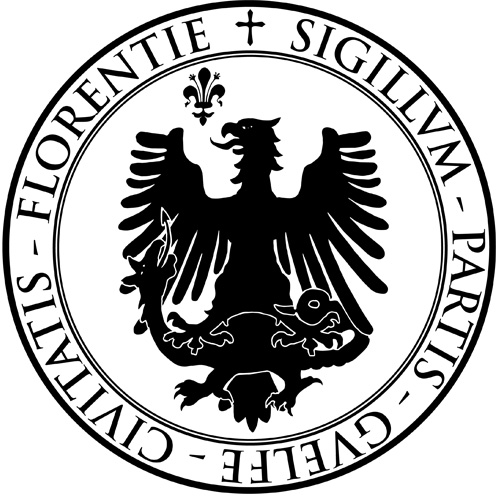
STATUTORY APPENDIX
AFFILIATIONS
The affiliation to the Italian Equestrian Sports Federation of the Part Guelph Archconfraternity is achieved through the Guelph Part – Chivalry of the Florentine Republic Amateur Sports Association. See the Statute and the Constitutive Act of the A.S.D. Part Guelph, a connected and instrumental body established with the exclusive purpose of carrying out the equestrian activities provided for by the statute of the Archconfraternity. The participation of the Archconfraternity of the Guelph Part among the lay aggregations of the Catholic Church is carried out through the international association of canon law Compagnia di San Ludovico di Tolosa and the Guelph Part, a connected and instrumental body established with the exclusive purpose of carrying out the activities religious provided by the statute of the Archconfraternity. The ludic-sporting traditions historically realized by the Guelph Party through the A.S.D. Part Guelph – Cavalleria Repubblica Fiorentina, like the Giostra di Madonna Libertà and the Giostra del Giglio, take place annually in collaboration with the Municipality of Florence, the Council of Feasts and Popular Florentine Traditions and the Italian Federation of Equestrian Sports. The jousters can be external subjects invited and selected by the Broken Spear of the Jousting Squadron, having heard the opinion of the Technician specifically assigned by FISE and the Credenza Council. The recreational-sporting activities such as the Fiorente, the Guelph Festival and others, are carried out independently by the Guelph Party, through the technical contribution of the A.S.D. Part Guelph – Cavalleria Repubblica Fiorentina, in collaboration with the Italian Federation of Equestrian Sports and can also be carried out for promotional and the Guelph Party is affiliated with the Italian Sports Center, as a promoter of sport as a moment of education, growth, commitment and social aggregation, inspired by the Christian vision of man in service to people and the territory, and to respond to a demand not only numerical but qualified on a cultural, human and social level.

SOLEMN INVESTITURES
GUELPH VIGIL
The evening preceding the solemn investitures of Parte Guelfa, the Vigil of the Arms of Parte Guelfa is held between the Rectories of San Carlo and Orsanmichele, preceded by the procession of the Knights of Parte Guelfa with insignia, seals and icon of San Ludovico d’Angiò , Patron of the Guelph Party, who, crossing the historic center, offers a greeting to the civil and ecclesiastical authorities in Piazza del Duomo. The Guelph Vigil takes place with interreligious readings, meditations and reflections for the moral preparation of the investendi, accompanied by pieces of Baroque music performed by the Maestro di Cappella di Parte Guelfa.
OATH
After a procession that, starting from the Rettoria di San Carlo reaches the Palagio di Parte Guelfa, crosses the historic center and offers a greeting to the civil authorities in Piazza della Signoria, the ceremony of the oath of the Knights and Dames of Parte Guelfa investendi takes place, in the Sala of the Camino del Palagio di Parte Guelfa:
Consul: “What are you asking?”
Investendi: “I ask to receive the Investiture as a Knight / Lady of the Guelph Party”
Consul: “Becoming a Knight and Lady of the Guelph Party means working for peace and justice, and for the protection of creation and the traditions of Florence with faith, hope and charity. Are you ready to accept this ideal for your life? ”
Investendi: “I’m ready!”
Consul: “Are you ready to promise, with word and heart, to observe the Statute and the Code of Ethics of the Guelph Party?”
Investendi: “I’m ready!”
Consul: “So be faithful to God and to the Guelph Party!”
Investendi: “I swear!”
Consul: “Then proclaim your solemn promises”
PROMISE
Invest:
“I DECLARE
to be honored to be part of the family of the Cavalieri di Parte Guelfa; to be aware that I cannot belong to Bodies and Societies whose characteristics, purposes and programs are in contrast with the Code of Ethics of the Guelph Party;
I PROMISE
to regulate my life according to moral principles so that, with actions and virtue, I can always be deserving of the honor granted to me and the dignity with which I have been invested; not to tarnish my name with unbecoming acts in order to always be worthy of belonging to the Guelph Party, observing the Statute and the Code of Ethics that regulate its activity.
I NOTE
finally, that if my future conduct should not be morally or socially upright, I will be subject to radiation from the Guelph Party. “
Captain General: “Marzocco!”
Everyone: “Marzocco! Marzocco! Marzocco! ”
SIGNATURE
The Knights and Ladies investendi receive the single call of the Captains and sign the promise in the hands of the Consul of the Parte Guelfa, in the Sala dei Capitani of the Palagio di Parte Guelfa. They then take their places, accompanied by godparents or godmothers, in the Brunelleschi Hall wearing cloaks, decorations and berets on the left arm with the red eagle insignia facing outwards.
PROCLAMATION
The Knights and Dames of Parte Guelfa form a short procession and enter the Brunelleschi Hall. Lastly enter the Consul and the Capitani di Parte Guelfa who arrange themselves in a central position.
The Aquilifer parades with the golden eagle on his arm and stands next to the banner of the Guelph Party, placing the bird of prey on the pole.
The Captain General announces the entry of His Excellency the Consul of the Guelph Party.
The Corrector General reads Psalm 23, by David.
Before the decoration, the Captain General reading the Investiture Bull:
“The decree with which the Guelph Party Council of Belief approved the appointment of the Knights and Dames who today will receive the solemn decoration is read:
INVESTITURE BULL
The magnificent Guelph Part, established with the approval of the Holy Father Clement IV, in the year of the Lord 1266, with the granting of its insignia to the Consul of the Knights of the Guelph Part, has always been a bulwark of freedoms and chivalric traditions and has been always an object of respect and special benevolence. Today, at the Palagio di Parte Guelfa in Florence, Knights and Dames present here, we grant the faculty and honor to wear our noble insignia. “
The Grand Master of Ceremonies invites the investors to stand up and the Guelph symbols run through the Hall to be shown to those present: the Grand Master of Ceremonies shows the Sword, the Grand Squire the Spurs and the Preserver the Seals.
The Major Captain solemnly presents the Guelph Sword to the Captain General, pronouncing the words of Giovanni delle Bande Nere: “Do not uncover me without reason, do not hold me worthless!”
The Captain General holds his sword, shows it to those present and proclaims: “Marzocco!”
Everyone: “Marzocco! Marzocco! Marzocco! “
The Captain General is placed to the left of the Consul.
Captain Camerlengo adorns the Consul with the Angevin cloak and the solemn investitures begin.
The Captain Major stands to the Consul’s right with sword in hand and hands it to him.
Consul: “Receive this sword and keep in mind that true honor is not won with the sword, but with love”.
The Captain General begins to call, one at a time, the investors summoning them by name, surname and place of origin.
The investor leaves the captains cloak and decoration, presents himself before the Consul and reclines his head as a sign of obedience.
The Major Captain hands and retrieves the sword to the Consul at each investing.
Consul: “By virtue of the mandate received, I proclaim you a Knight / Lady of the Guelph Party.”
The Consul touches the left shoulder of the investor with the sword (for Ladies with the right hand).
The invested Knight / Lady reclines his head in greeting to the Consul and is dressed in the cloak and decoration by the Camerlengo and Geniere Captains.
The Captain General dismisses the Knight / Lady with an embrace of peace, pronouncing the following formula: “May our ensigns always protect you”.
The Captain Lieutenant gives the parchment to the Knight / Lady, who returns to his decorated place.
At the end of the investitures, the Grand Master of Ceremonies invites everyone to stand up.
The Captain General thanks all the attendees and calls once the “Marzocco!”
Everyone: “Marzocco! Marzocco! Marzocco! “
SUFFRAGE
Before the conclusion of the ceremony, with all the Knights and Dames standing, the Corrector General remembers the brothers and sisters who have deceased.
DEO GRATIAS
The ceremony ends with all the Knights and Dames standing in the Brunelleschi Hall who, arranged in a circle, pronounce the “Deo Gratias!” Together.
ELECTORAL REGULATIONS
These Electoral Regulations apply to the election of the Captains who, in the number of five, make up, together with the Consul, the Council of Belief, or the governing body of the Guelph Party Archconfraternity. Pursuant to the Statute, the election of the Captains is the prerogative of the General Assembly of the Ordinary members of the Guelph Party. The voting operations, the relative scrutiny and the proclamation of the elect, therefore take place within a validly constituted General Assembly meeting, on first or second call. This meeting is called with at least thirty days’ notice and the applications must be received at least fifteen days before the meeting itself. Board offices can be re-elected without limits and the Credenza Board remains in office for five years. The elected Captains, pursuant to the Statute, elect or confirm the Consul, with the functions of “honorary president” and, therefore, of address, choosing him from among the highest personalities belonging to the Guelph Party. The Captains also elect from among themselves, annually, the Captain General, with the functions of president, the Captain Major, vice-president, the Captain Camerlengo, the Captain Lieutenant and the Captain Engineer, each with the functions attributed to him by the Statute.
RIGHT TO VOTE
All the confreres and ordinary sisters who are up to date with the payment of the annual membership fees expired on the date of the elections have the right to cast their vote.
VOTING AND SCRUTINY METHODS
Before the vote, each candidate or list representative sets out their programmatic ideas and confirms their willingness to serve the Guelph Party with commitment, dedication and fidelity, aware that the role of Captain, or Director, is binding and priority over any other voluntary activity possibly carried out by the person. The Electoral Commission is made up of the Credenza Secretary, the Notary and at least two scrutineers who volunteer among non-candidates. Pursuant to the Statute, voting takes place secretly by affixing one’s choices to a special ballot paper, to be inserted in the ballot box in the presence of the Credenza Secretary and the Notary. Those entitled to who are unable to attend, have the right to delegate in writing a Brother or Sister who, in this case, can use a second card to exercise the voting right of the delegator, respecting his will under his own moral responsibility. Only one proxy per person is allowed. Those who, for reasons of health or excessive distance, participate in the General Meeting by videoconference, can express their vote by communicating it to the Secretary of Belief and the Notary, audible to the scrutineers, and thus partially renouncing secrecy. This expression of vote is recorded by the Secretary of Credenza in an aggregate manner, that is, reporting only the number of voters and the preferences expressed. At the end of the voting operations, or in any case at the time set as such in the agenda of the General Meeting, the public scrutiny of the ballots begins. The ballot box is opened by the Credenza Secretary, assisted by the Notary and in the presence of the scrutineers. Each preference is read aloud by the Notary, who delivers the scrutinized form to the scrutineers, and reported in a specific paragraph of the minutes by the Credenza Secretary. The outcome of the vote is recorded in the minutes of the General Meeting and the ballots are kept in the records in the Guelph Party archives. The proclamation of the elected takes place by the Grand Master of Ceremonies or, in his absence, by the Herald or the Secretary of Belief.
ORDINARY ELECTIONS
Ordinary elections are held for the renewal of the entire Board of Belief at the end of the five-year term or, in advance, when the majority of the Captains cease to exist due to resignation, revocation or other lasting impediment to perform the function. Each person with the right can vote for a list of candidates or for a single candidate not belonging to any list.
SUPPLETIVE ELECTIONS
Supplementary elections are held when it is necessary to elect one or two Captains, due to the lack of substitutes among the candidates not elected in the last ordinary election. Each person entitled to vote can express a maximum number of preferences equal to the number of Captains to be elected.
APPLICATIONS
All Knights and Ordinary Dames of Arms who have reached the age of 25, are up to date with the payment of the annual membership fee and who have not reported the interdiction provision by of the Disciplinary Commission. The candidacy can take place within a list or individually and must be notified to the Board of Belief in office at least fifteen days before the date set for the elections. Candidates who intend to compose a list must indicate at least seven names, sorted, of which the first five will be able to compose the new Board and the others take over if necessary during the term of office. The list may also prepare a list of Brothers and Sisters to whom it is intended to entrust, with their consent, the posts of the General Staff for the five-year term or, at least, for the first year of their mandate. Each eligible candidate, who is not part of a list, has the right to present himself as a single candidate. In the event of supplementary elections, for the reinstatement of the Council with the election of one or two Captains, the formation of lists is not allowed.
ASSIGNMENT MANDATE
At the end of the ballot, the first five candidates listed in the list with the highest number of votes will be elected Capitano di Parte Guelfa. In the event that a candidate who presented himself individually received more votes than the aforementioned list, the Board will consist of the first four candidates on the list and the single candidate with more preferences. In the case of two single candidates who have obtained more votes from the list with more preferences, the first three of the list and the two singles will be elected, and so on up to any four individual candidates and the first of the list. If, during the five-year term of office, one or two Captains elected from a list should cease from office, the first of the non-elected members from the list will take over. If the office of an individually elected Captain ceases, or if there are no substitutes available on the majority list, supplementary elections will be called. Should three or more Captains cease from office at the same time, ordinary elections must be held for the renewal of the entire Belief Council. Until the election of the new Council, the members of the outgoing Council remain provisionally in office for the sole ordinary administration and the convening of the Meeting. The elected Council is not bound, in the internal elections of offices, to the order in which candidates are listed on the list: the Captains therefore have the right to annually elect, among themselves, the Captain General even if not indicated as the first element of the list; the same applies to the other board roles. The Credenza Council, in the functions attributed to it by the Articles of Association, decides by majority vote. The admission of Aspirants, as well as the definitive admission of Knights and Dames to investitures, is resolved unanimously.
INCOMPATIBILITY
The role of member of the Council of Credence is incompatible with political positions at national or local level, with belonging to associations having purposes in contrast with those of the Guelph Party, with functions in the Boards of Directors of national and local sports federations and in the Councils Directors of other Associations, Confraternities and Foundations, with the exception of the ASD Guelph Part – Cavalry of the Florentine Republic and of the Company of San Ludovico of Toulouse and of the Guelph Party.
FORMATION OF COUNCILS AND JOINT VOTING OPERATIONS
In consideration of the fact that, despite their legal independence, the A.S.D. Parte Guelfa – Cavalry of the Florentine Republic and the association of faithful under canon law Compagnia di San Ludovico di Tolosa and the Parte Guelfa, constitute emanations of the promoter Arciconfraternita Parte Guelfa, respectively for the exercise of sporting activities and worship activities, with with the agreement of the respective Councils, the three associations may decide that the voting operations for the renewal of the Councils take place jointly, while respecting the freedom and independence of candidacies and voting expressions. The belonging of the same persons to the various Councils of the three aforementioned associations is therefore expressly excluded from the incompatibility clauses referred to in the previous article and, in line with the respective statutes, the full coincidence and superimposition of the three bodies is also permitted if the assemblies of the respective bodies deem it appropriate and advantageous for the better management of the common interests in their respective areas of competence.

“Siate dunque fedeli a Dio e alla Parte Guelfa!”
